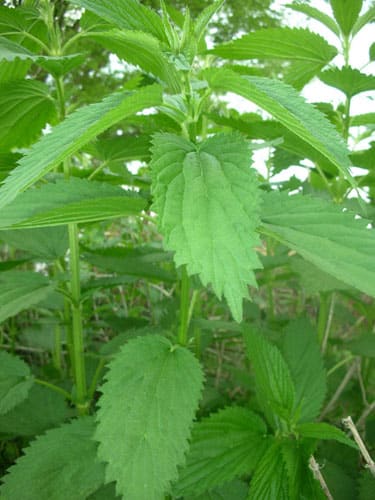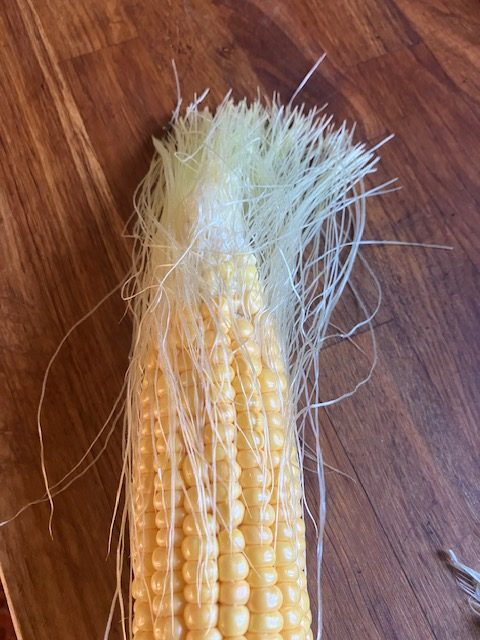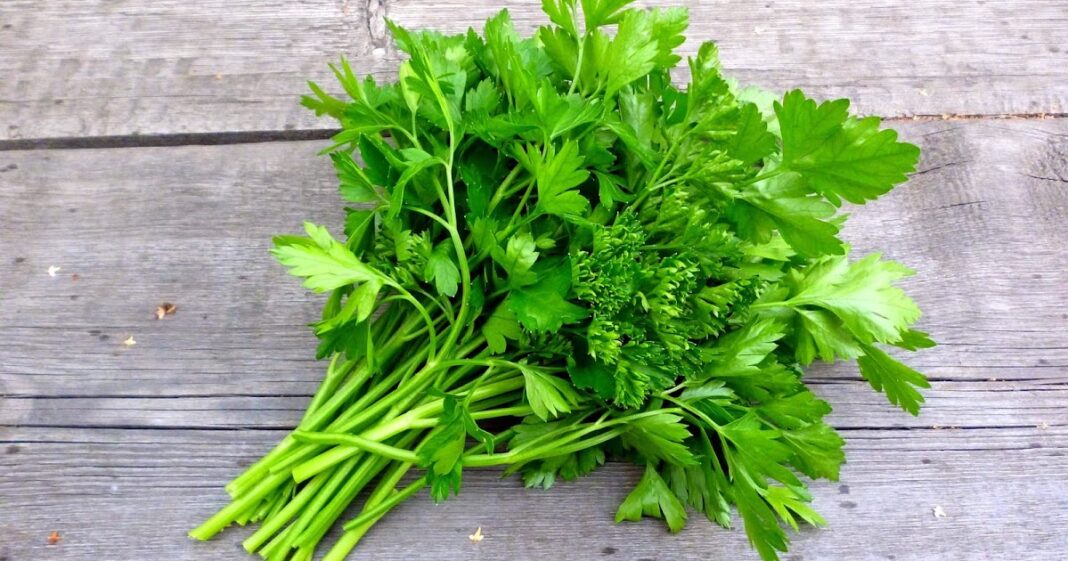Nettles are so well known, that they need no description; they may be found by feeling, in the darkest night.
-Nicholas Culpeper
Cursed for his nasty sting, Stinging Nettles, also referred to as Nettles, may take some getting used to but knowing how to harvest and treat this feisty herb is well worth your time!
Native to North American, Europe and Asia, Nettles can be found in all temperate areas of the world and has naturalized in most including Australia and New Zealand.
Nettles is extremely useful. Besides being a wonderful tonic and having many medicinal uses, he can be eaten (the sting goes away when he’s cooked) and his stems can be turned into fiber to make rope, yarn and paper!
Nettles grows in wild places proficiently. Look for him in the woods, near river banks, roadsides, the edges of fields, waster ground (he loves to grow over septic fields), pastures and wherever the nitrogen content is high in the soil.
Let’s carefully examine a Nettle plant now. Experience will teach you how to handle this herb without protection but if you are new to Nettles, you might want to put on a pair of thin garden gloves to protect yourself from his sting. Those who have a relationship with Nettles’ medicine honor his sting and accept that a few stings are worth the trouble.
Look carefully at his stalk, it is not perfectly round but instead looks as though 4 thin stalks have been placed together for his stalk is a rounded square with 4 indentions in the middle of each side. This stalk is covered with fine hairs or stingers which contain formic acid, serotonin and histamine.
Be careful touching his leaves, they contain stingers on the underside and on their stems. The leaf looks rough because his veins are depressed into them.
A word on his sting: I have found that he doesn’t like to sting on touch. Rather, the fine hair like stingers wait until they are crushed to release their acid. When I am harvesting Nettles, I don’t get stung much any more because I have learned as long as I don’t go against him, he won’t sting me. It’s similar to brushing your hand over a stuffed animal with long fur. As long as you stroke it in the direction the hair lies, it stays smooth. But if you go in the opposite direction, the hairs stick up in all directions. It’s the same with Nettles. If you hold onto one of his leaves while harvesting, or brush down on the stem as you grasp it, you have very little chance of being stung. Try this at your own risk but remember, even the sting has healing benefits!
All parts of Nettles are useful medicinally although typically, only the tender tops and leaves are used. However, there is great medicine in his roots and seeds and those should be considered for medicine as well.
As a food, the tender tops are harvested in the spring, then sautéed or boiled (saving the water to drink for its mineral content) or chopped and added to soups, casseroles and stews.
Why all this fuss about eating a plant that obviously doesn’t want to be eaten given the fact that his sting may stay with you for the rest of the day? Because as one of the most nourishing and toning herbs, Nettles is extremely high in calcium, chlorophyl, chromium, magnesium and zinc, high in cobalt, manganese, phosphorus, potassium, protein, B2 (riboflavin), selenium, silicon, B1 (thiamine), vitamin A and C. He contains average amounts of iron, Be (niacin) and tin and trace amounts of aluminum.
Medicinally, Nettles is used as a nourishing adrenal tonic, alterative, antiallergenic, anticatarrhal, antihistamine, anti-inflammatory, antioxidant, antirheumatic, antiscorbutic, antiseptic, antilithic, astringent, blood tonic, carminative, cholagogue, circulatory stimulant, decongestant, depurative, diuretic, expectorant, febrifuge, galactagogue, hemostatic, hypoglycemic, kidney tonic, lithotriptic, mucolytic, nervine, nutritive, parturient, pectoral, tonic, styptic, and uterine tonic. Additionally, the seed is considered to be adaptogenic, anthelmintic, antiseptic, endocrine tonic, rejuvenative, thyroid tonic, trophorestorative and vermifuge. The root is also considered to be a prostatic and tonic, especially for the prostate.
Nettles has an affinity for the kidneys, liver and muscles. As a diuretic, he really gets fluids moving. Many cases have been reported for restoring kidneys and preventing or ending the need for dialysis from using liberal amounts of daily infusions. Herbalists Matthew Wood and David Winston speak of such cases. As a lithotriptic, Nettles helps with dissolving and discharging urinary and gall bladder stones and gravel. As an alterative, cleansing the kidneys and liver also has a cleansing effect on the blood.
The roots are specific for prostate issues. According to David Winston in his book Saw Palmetto for Men & Women, “Nettle root inhibits the breakdown of testosterone into dihydrotestosterone. The mechanism for this is believed to be its inhibition of both 5-alpha-reductase and aromatase.” He recommends combining Nettle root with equal parts of Saw Palmetto (Serenoa repens), Collinsonia (Collinsonia canadensis) and White Sage (Salvia apiana) for benign prostatic hyperplasia.
In the spring, after a good rain, you will find the roots nestled under the emerging plants. They often send long runners that can be easily teased from the ground. This is a great way to practice crowd control to your Nettles patch, thinning them out as well as keeping them from spreading too far into the rest of the garden.
According to Matthew Wood, Nettles is “one of the most generally useful plants in the pharmacopoeia.” He states Nettles acts on all constitutional types, from feeding and nourishing to de-sensitizing against allergens to helping to remove excess stagnation in the body, including water and mucus.
If you or someone you know suffers from allergies, drinking daily infusions of Nettles can be very helpful for helping your body overcome these allergies.
Nettles contains histamine and helps the mucosa of the body to become less sensitive to allergens.
While it may seem crazy, the sting of Nettles is actually quite healing. I used to suffer from arthritis in my fingers but after brushing my knuckles through Nettles every time the pain started up, i managed to cure myself and haven’t been bothered by it in over 5 years now.
Nettles is quite the rubefacient, causing circulation and redness to any area of the skin he touches. Increased circulation is helpful for diabetics. Nettles also brings circulation to the peripheral blood vessels along with his diuretic properties to help lower high blood pressure.
For breastfeeding mothers, Nettles is a galactagogue, helping to increase the milk flow. Some sources state he actually regulates the flow, increasing or decreasing as necessary.
Pregnant women and others who suffer from anemia will find Nettles helpful as he contains lots of iron and chlorophyll.
If you suffer from asthma, be sure to have lots of Nettles on hand! The tincture is great to have around for acute attacks while taking daily infusions over time can help build up your lungs to help restore and heal lung tissue. Deep penetrating steams with Nettles can help bring up phlegm and congestion, making a useful expectorant during illnesses.
As Nettles works to destroy these allergens (proteins) from the body, he works well with the liver to break down these proteins and remove them from the body, helping the kidneys to function properly in the process.
While it may seem crazy, the sting of Nettles is actually quite healing. I used to suffer from arthritis in my fingers but after brushing my knuckles through Nettles every time the pain started up, i managed to cure myself and haven’t been bothered by it in over 5 years now.
Nettles is quite the rubefacient, causing circulation and redness to any area of the skin he touches. Increased circulation is helpful for diabetics. Nettles also brings circulation to the peripheral blood vessels along with his diuretic properties to help lower high blood pressure.
For breastfeeding mothers, Nettles is a galactagogue, helping to increase the milk flow. Some sources state he actually regulates the flow, increasing or decreasing as necessary.
Pregnant women and others who suffer from anemia will find Nettles helpful as he contains lots of iron and chlorophyll.
If you suffer from asthma, be sure to have lots of Nettles on hand! The tincture is great to have around for acute attacks while taking daily infusions over time can help build up your lungs to help restore and heal lung tissue. Deep penetrating steams with Nettles can help bring up phlegm and congestion, making a useful expectorant during illnesses.
Want to learn more about Nettles? There are several ways to learn! You can grab the ebook on Nettles in my shop, or if you’d like extra curriculum and video lessons, you can join Herb Club for only $10 a month where you’ll get 7 video lessons and 4 levels of curriculum plus bonus coloring pages.


